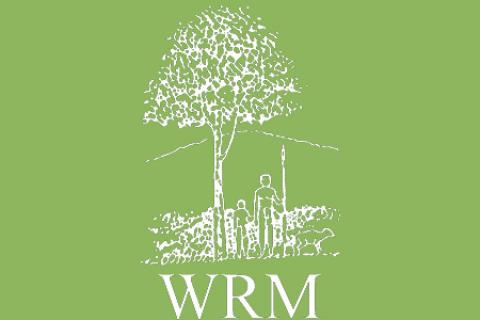The situation is much the same in many southern countries: people and supporting organizations are trying to protect the forests against government-corporate alliances. Well known causes of biodiversity loss such as industrial logging, fossil fuel exploration and exploitation, mining, hydroelectric dams, industrial monocrops, road opening and shrimp farming continue being promoted for the almost exclusive benefit of large corporations.
Bulletin articles
Contrary to the corporate “mining” approach to forests which invariably implies their destruction, stand out the diverse uses transmitted from generation to generation of indigenous and local communities which have developed a wide and deep knowledge (beyond science) of the forest that have allowed them to benefit from it in a sustainable manner.
Industrial logging is one of the main direct causes of forest biodiversity loss. Many organizations and governments have focused on illegal logging and less so on destructive legal logging (see WRM Bulletin Nº 98). In this respect, a recent report (“Legal Forest Destruction. The Wide Gap Between Legality and Sustainability”) provides a broader perspective by looking at the Dutch timber trade, its focus on legality and the impact of legal logging on forests.
The Cayapas-Mataje Ecological Mangrove Reserve in the Province of Esmeraldas covers an area of 51,300 hectares and within it is the Majagual mangrove covering 28,367 hectares. The mangrove is the habitat of crustacean species including oysters, blue crabs and shrimps and of tree species such as the red, black, white and jeli mangroves.
At a cost of 1,600 million dollars, the Camisea mega project for natural gas extraction from an area located on the banks of the Camisea River -one of the world’s richest areas in biodiversity- has the Inter-American Development Bank as its main public financer. However, it has not brought any benefit to the local communities. As denounced in WRM Bulletin No. 95, the Camisea project will be carried out at the expense of forest destruction, river contamination and noise pollution, soil erosion and the consequent degradation of flora and fauna in the project’s area of influence.
Earlier this year, a rare thing happened: West Papua hit the headlines. The news was the discovery of a new species of honeyeater bird, a "lost" bird of paradise, a nearly extinct tree kangaroo, 20 new species of frogs, four new butterflies and five new species of palms. The species were found during an expedition to the Foja Mountains organised by Conservation International and the Indonesian Institute of Sciences. "It's as close to the Garden of Eden as you're going to find on Earth," said Bruce Beehler, co-leader of the group.
In many cases, forest destruction has created situations of such gravity that company managers and officials -finding themselves cornered by complaints, social pressure or pressure from business sectors whose interests are threatened by the discredit of their activities- are developing their own discourse regarding environmental solutions.
For many years people have been hearing about climate change and the terrible impacts it would entail. In spite of warnings of the pending disaster, a group of scientists in the service of corporate interests has been trying to cast doubts on the scientific evidence. At the same time, another group of academics and technocrats has been inventing absurd mechanisms to “compensate” for carbon emissions in order to allow fossil fuel use to continue. Among these mechanisms are large-scale plantations of fast growing trees – located in the South, of course.
Argentina-Chile: Young Mapuche opposed to the advance of plantation companies seeks political asylum
On 6 December, 23-year-old Pascual Pichun Collanao, a member of the Antonio Nirripil community from the Temulemu sector in the southern Chilean commune of Traiguen, formally requested political asylum in Argentina. The young man had been on the run since November 2003 when, with his brother Rafael they decided not to give themselves up to justice after being refused the right to freedom under surveillance because they were unable to pay a court fine. The brothers had been given a 5-year jail sentence for setting fire to a truck belonging to Forestal Minico in March 2002.
A new report by Friends of The Earth International; “Campagna Per La Riforma Della Banca Mondiale”; CEE Bankwatch Network, and World Economy, Ecology & Development issued in January 2006, highlights the role of the European Investment Bank as financer of so called “development” projects in the South, including Africa. The question raised is: development for whom? The research, entitled “The European Investment Bank In The South. In Whose Interest?”, gives insights around that question.
On February 15, 2006, Kinshasa was the venue of a National Forest Forum where global financial institutions, government authorities, environmental experts, human rights campaigners and local people discussed ways to protect the rainforests of the Democratic Republic of Congo (formerly Zaire), the world’s second largest after the Amazon.
National and international NGOs participated in the event reaffirming the need for a sustainable management of forest ecosystems in the DRC, respectful of the rights and interests of local communities.
Ongoing heart-rending stories of starving people in Kenya are highlighting the problem of drought and its causes. Kenya, east Africa's richest nation and a top attraction for tourists who flock to its reserves and parks for safari holidays, is under a severe crisis of poor rains that hits its harvests. The number of people who face starvation is spiralling ever higher: from 2.5 million in December to 4 million now, according to Kenya's minister for emergency operations.
